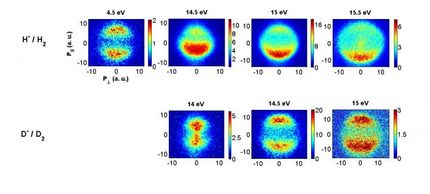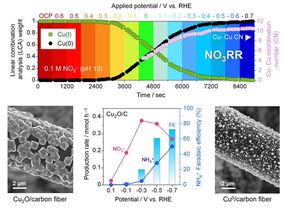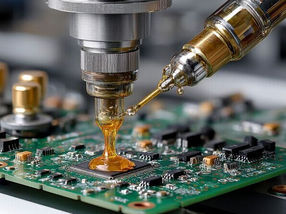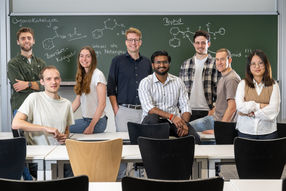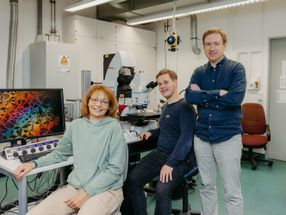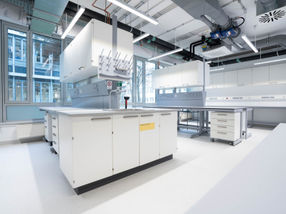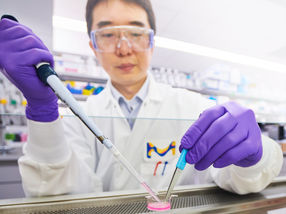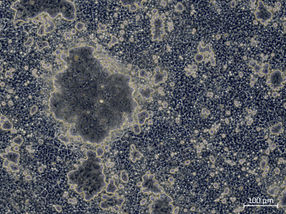Picometric spectroscopy of hydrogen molecules in atomic nanocavities
Scientists have observed hydrogen and deuterium molecules in so-called picocavities using advanced spectroscopy
Advertisement
An international research team led by Akitoshi Shiotari from the Fritz Haber Institute of the Max Planck Society (Germany), Mariana Rossi from the Max Planck Institute for the Structure and Dynamics of Matter (Germany) and Takashi Kumagai from the Institute for Molecular Science/SOKENDAI (Japan) has successfully realized the spectroscopic single-molecule observation of hydrogen (H₂) and deuterium (D₂) within a picocavity. The picocavity was created between a silver nanotip and a single-crystal silver substrate under cryogenic conditions and ultra-high vacuum using tip-enhanced Raman spectroscopy (TERS).
In recent years, light-matter interactions in atomically dimensioned volumes - so-called picocavities - have aroused increasing interest in nanoscience and nanotechnology. The extremely strongly confined plasmonic field due to plasmon resonance is now considered a promising platform for atomic-scale measurements and quantum photonics technologies.
In this study, the smallest molecule - hydrogen - was confined in a picocavity and investigated with high-resolution TERS. This enabled picometric molecular spectroscopy to visualize its vibrational and rotational modes in unprecedented detail. This revealed how the structure and vibrational properties of a single molecule are affected by the extreme spatial confinement within the picocavity. In addition, by precisely adjusting the distance between the silver tip and the substrate, the interaction with the molecule could be specifically varied. This showed that only the vibrational mode of H₂ - but not that of D₂ - exhibited a significant change, indicating a strong isotope-dependent effect that cannot be detected by conventional vibrational spectroscopies such as Raman spectroscopy.
To clarify the origin of this non-trivial isotopic effect, the team performed theoretical simulations using density functional theory (DFT), path integral molecular dynamics (PIMD) and model Hamiltonians. These calculations showed that spectroscopy is extremely sensitive to the local interaction potential, which is largely determined by van der Waals forces. The quantum mechanical delocalization of the atomic nuclei - a quantum expansion at low temperatures - plays a crucial role in the observed differences: it favours different positions of H₂ and D₂ in the picocavity, which leads to significant differences in their vibrational spectra. Dr. Rossi explains: "We were surprised how strongly the coupling of the vibrational modes and quantum mechanical nuclear effects interact to produce such a pronounced isotope effect."
Dr. Shiotari explains: "This work deepens our understanding of light-molecule interactions and the quantum dynamics of adsorbed molecules in extremely confined spaces - a significant advance in high-precision molecular spectroscopy." Prof. Kumagai adds: "The methods and insights developed here are likely to contribute to the advanced analysis of hydrogen storage materials and catalytic reactions in the future, as well as to the development of quantum control technologies at the single-molecule level - and thus also to the next generation of nanoscale sensors and quantum photonics."

Raman scattering of a hydrogen molecule in a plasmonic picocavity.
© FHI
Note: This article has been translated using a computer system without human intervention. LUMITOS offers these automatic translations to present a wider range of current news. Since this article has been translated with automatic translation, it is possible that it contains errors in vocabulary, syntax or grammar. The original article in German can be found here.
Original publication
Other news from the department science
Most read news
More news from our other portals
See the theme worlds for related content
Topic World Spectroscopy
Investigation with spectroscopy gives us unique insights into the composition and structure of materials. From UV-Vis spectroscopy to infrared and Raman spectroscopy to fluorescence and atomic absorption spectroscopy, spectroscopy offers us a wide range of analytical techniques to precisely characterize substances. Immerse yourself in the fascinating world of spectroscopy!

Topic World Spectroscopy
Investigation with spectroscopy gives us unique insights into the composition and structure of materials. From UV-Vis spectroscopy to infrared and Raman spectroscopy to fluorescence and atomic absorption spectroscopy, spectroscopy offers us a wide range of analytical techniques to precisely characterize substances. Immerse yourself in the fascinating world of spectroscopy!



